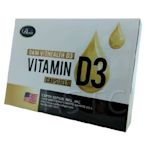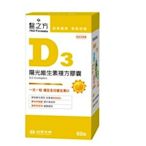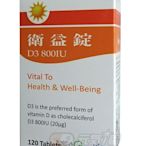搜尋結果
 $1200☆☆小虎健康生活館☆☆ 大頤維樂康 維生素D3 800IU液態軟膠囊 120粒/盒 $1200小虎健康生活館
$1200☆☆小虎健康生活館☆☆ 大頤維樂康 維生素D3 800IU液態軟膠囊 120粒/盒 $1200小虎健康生活館 $99🌸愛戀女王🌸【得意人生】維生素D3膠囊 (60粒/罐) ㊣↘👍👍👍Y1429163258
$99🌸愛戀女王🌸【得意人生】維生素D3膠囊 (60粒/罐) ㊣↘👍👍👍Y1429163258 $300【買四罐以上,免運費】醫之方 陽光維生素D3複方膠囊(60粒/罐)保健天地
$300【買四罐以上,免運費】醫之方 陽光維生素D3複方膠囊(60粒/罐)保健天地 $1500【元氣一番.com】『衛益錠D3 800IU 120入裝』◎每錠含營養型維生素D3 800IU◎免運費元氣一番.com
$1500【元氣一番.com】『衛益錠D3 800IU 120入裝』◎每錠含營養型維生素D3 800IU◎免運費元氣一番.com![KIRKLAND SIGNATURE科克蘭 鈣加維生素D3綜合錠 500錠 KIRKLAND SIGNATURE科克蘭 鈣加維生素D3綜合錠 500錠]() $559KIRKLAND SIGNATURE科克蘭 鈣加維生素D3綜合錠 500錠☆娜漾美麗☆雅詩蘭黛全商品特價中
$559KIRKLAND SIGNATURE科克蘭 鈣加維生素D3綜合錠 500錠☆娜漾美麗☆雅詩蘭黛全商品特價中![滿999免運 寶齡富錦 高濃度液態維生素D3+E(25ml/瓶) 舌下滴劑 滿999免運 寶齡富錦 高濃度液態維生素D3+E(25ml/瓶) 舌下滴劑]() $309滿999免運 寶齡富錦 高濃度液態維生素D3+E(25ml/瓶) 舌下滴劑20 40 60的健康生活
$309滿999免運 寶齡富錦 高濃度液態維生素D3+E(25ml/瓶) 舌下滴劑20 40 60的健康生活![菁禾GENHAO維生素D3 800IU錠100粒3盒 菁禾GENHAO維生素D3 800IU錠100粒3盒]() $986菁禾GENHAO維生素D3 800IU錠100粒3盒菁禾GENHAO
$986菁禾GENHAO維生素D3 800IU錠100粒3盒菁禾GENHAO![【悠活原力】原力維生素D3 250元(120顆) 【悠活原力】原力維生素D3 250元(120顆)]() $250【悠活原力】原力維生素D3 250元(120顆)台灣聯合訂房中心
$250【悠活原力】原力維生素D3 250元(120顆)台灣聯合訂房中心![菁禾GENHAO維生素D3 800IU錠100粒1盒 菁禾GENHAO維生素D3 800IU錠100粒1盒]() $511菁禾GENHAO維生素D3 800IU錠100粒1盒菁禾GENHAO
$511菁禾GENHAO維生素D3 800IU錠100粒1盒菁禾GENHAO![德國代購 現貨含運 Salus Floradix有機兒童鐵元+鈣+維生素D3 250ml。 德國代購 現貨含運 Salus Floradix有機兒童鐵元+鈣+維生素D3 250ml。]() $880德國代購 現貨含運 Salus Floradix有機兒童鐵元+鈣+維生素D3 250ml。EU SHOP 設計、規劃、採購
$880德國代購 現貨含運 Salus Floradix有機兒童鐵元+鈣+維生素D3 250ml。EU SHOP 設計、規劃、採購![力增飲 多元營養配方 玉米風味 24罐/箱 (優蛋白 維生素D3 高鈣高鐵 奶素) 專品藥局【2018929】 力增飲 多元營養配方 玉米風味 24罐/箱 (優蛋白 維生素D3 高鈣高鐵 奶素) 專品藥局【2018929】]() $939力增飲 多元營養配方 玉米風味 24罐/箱 (優蛋白 維生素D3 高鈣高鐵 奶素) 專品藥局【2018929】【專品藥局】P&Q實體店面
$939力增飲 多元營養配方 玉米風味 24罐/箱 (優蛋白 維生素D3 高鈣高鐵 奶素) 專品藥局【2018929】【專品藥局】P&Q實體店面![【seven健康小舖】<日本 人生製藥> 【渡邊 檸檬酸鈣 膜衣錠(60錠/瓶)】檸檬酸鈣.維生素D3 【seven健康小舖】<日本 人生製藥> 【渡邊 檸檬酸鈣 膜衣錠(60錠/瓶)】檸檬酸鈣.維生素D3]() $230【seven健康小舖】<日本 人生製藥> 【渡邊 檸檬酸鈣 膜衣錠(60錠/瓶)】檸檬酸鈣.維生素D3【seven健康小舖】
$230【seven健康小舖】<日本 人生製藥> 【渡邊 檸檬酸鈣 膜衣錠(60錠/瓶)】檸檬酸鈣.維生素D3【seven健康小舖】
Vitamin D is a group of fat-soluble secosteroids responsible for increasing intestinal absorption of calcium, magnesium, and phosphate, and for many other biological effects. [ 1][ 2] In humans, the most important compounds in this group are vitamin D 3 ( cholecalciferol) and vitamin D 2 ( ergocalciferol ). [ 2][ 3]
Cholecalciferol (vitamin D3) appears to stimulate the body's interferon type I signaling system that protects against bacteria and viruses, unlike vitamin D 2. [19] For psoriasis, cream that includes vitamin D3 can have a good effect, or UVB phototherapy.
Function. The VDR gene encodes the nuclear hormone receptor for vitamin D. The most potent natural agonist is calcitriol (1,25-dihydroxycholecalciferol) and the vitamin D 2 homologue ercalcitriol, 1-alpha,25-dihydroergocalciferol) is also a strong activator.
Vitamin D deficiency or hypovitaminosis D is a vitamin D level that is below normal.
Calcitriol is, strictly, the 1-hydroxylation product of calcifediol (25-OH vitamin D 3 ), derived from cholecalciferol (vitamin D 3 ), rather than the product of hydroxylations of ergocalciferol (vitamin D 2 ). [6] 1α,25-Dihydroxyergocalciferol (ercalcitriol) should be used for the vitamin D 2 product. [6]
The first of these (also known as 25-hydroxy vitamin D3) is made by the body, or is sourced from certain animal foods or cholecalciferol supplements. The second (25-hydroxy vitamin D2) is from certain vegetable foods or ergocalciferol supplements. [ 11]
Previtamin D3 is an intermediate in the production of cholecalciferol ( vitamin D 3 ). It is formed by the action of UV light, most specifically UVB light of wavelengths between 295 and 300 nm, acting on 7-dehydrocholesterol in the epidermal layers of the skin. [1] [2] [3]








